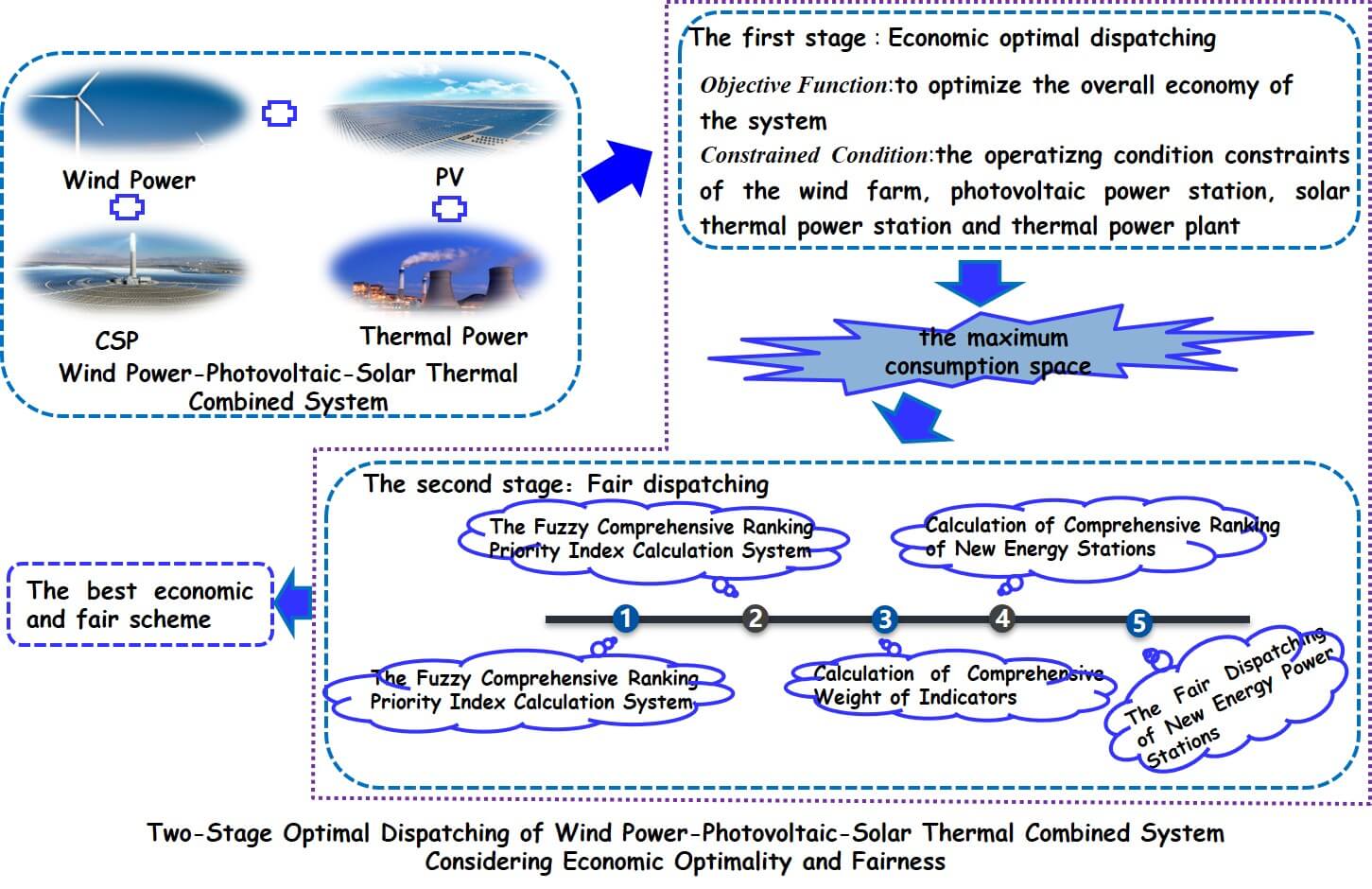 Open Access
Open Access
ARTICLE
Two-Stage Optimal Dispatching of Wind Power-Photovoltaic-Solar Thermal Combined System Considering Economic Optimality and Fairness
1 School of New Energy & Power Engineering, Lanzhou Jiaotong University, Lanzhou, 730000, China
2 China Petroleum Pipeline Engineering Corporation, Langfang, 065000, China
3 Electric Power Research Institute of State Grid Gansu Electric Power Company, Lanzhou, 730000, China
* Corresponding Author: Haiying Dong. Email:
Energy Engineering 2023, 120(4), 1001-1022. https://doi.org/10.32604/ee.2023.024426
Received 30 May 2022; Accepted 26 August 2022; Issue published 13 February 2023
Abstract
Aiming at the problems of large-scale wind and solar grid connection, how to ensure the economy of system operation and how to realize fair scheduling between new energy power stations, a two-stage optimal dispatching model of wind power-photovoltaic-solar thermal combined system considering economic optimality and fairness is proposed. Firstly, the first stage dispatching model takes the overall economy optimization of the system as the goal and the principle of maximizing the consumption of wind and solar output, obtains the optimal output value under the economic conditions of each new energy station, and then obtains the maximum consumption space of the new energy station. Secondly, based on the optimization results of the first stage, the second stage dispatching model uses the dispatching method of fuzzy comprehensive ranking priority to prioritize the new energy stations, and then makes a fair allocation to the dispatching of the wind and solar stations. Finally, the analysis of a specific example shows that the model can take into account the fairness of active power distribution of new energy stations on the basis of ensuring the economy of system operation, make full use of the consumption space, and realize the medium and long-term fairness distribution of dispatching plan.Graphic Abstract

Keywords
Cite This Article
 Copyright © 2023 The Author(s). Published by Tech Science Press.
Copyright © 2023 The Author(s). Published by Tech Science Press.This work is licensed under a Creative Commons Attribution 4.0 International License , which permits unrestricted use, distribution, and reproduction in any medium, provided the original work is properly cited.


 Submit a Paper
Submit a Paper Propose a Special lssue
Propose a Special lssue View Full Text
View Full Text Download PDF
Download PDF Downloads
Downloads
 Citation Tools
Citation Tools